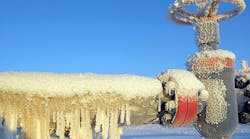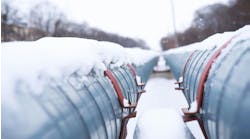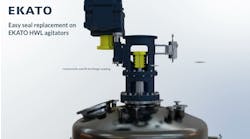Maintenance: Get Ready For The Next Big Freeze
Plants need to make preparations for arctic weather even if they only face such conditions very infrequently. That’s a cold hard fact now abundantly apparent to facilities in Texas and elsewhere on the Gulf Coast. Because protection against intense cold isn’t needed every day or even every year there — more like every decade or two — over time attention to detail may lag and systems may degrade. However, failure to protect can have serious consequences.
The biggest problems come from water. The expansion of water when it freezes can cause burst pipes. Burst pipes affect not only houses but also plants. Frozen vessels and water-filled pipes can rupture. Even if water plugs don’t burst the equipment, the ice formed can break open flanges and force leaks. Loss of integrity from freezing has led to major fires and environmental releases.
To protect your plant, first eliminate piping dead-legs (see “Watch Out for Dead-Legs”). Isolated piping segments without flow attract many problems. One of these is the possibility of having a water pocket in what’s supposed to be an oil-filled line.
Next, ensure that areas where water is supposed to be have sufficient insulation and heating to prevent the water freezing. This applies for both normal operating conditions as well as if the plant is in standby or shutdown mode.
Many processes have plenty of heat in them to prevent freezing as long as they are operating. However, if not running, the process may cool down to ambient conditions unless heated. Insulation gives extra time to take action and reduces the heat load required to keep the plant warm. Heating systems prevent the water from freezing.
Extreme freezing events also cause external upsets that impact a plant, as the widespread loss of electricity in Texas underscores. If your plant depends upon electrical tracing for freeze protection, how long can you operate without an outside supply of electricity to prevent freezing?
Steam tracing systems avoid the use of electricity but pose their own problems. Many steam tracing systems have failed due to the steam system freezing somewhere.
Hot oil systems are another alternative. However, they are more difficult and expensive to install and maintain. Additionally, hot oil circulation requires a pump. What happens if you lose electricity?
While water bursting equipment is the most severe freezing problem, blocked equipment can create problems as well. For instance, consider flare systems. Most flare seal drums use water to prevent air ingress. It would take a while to freeze enough to seal a flare — but this has happened. In such a situation, a major part of the plant’s safety system isn’t working properly. Likewise, back pressure due to the plugged equipment can dramatically reduce the capacity of relief systems.
Other situations where freezing can cause problems are when non-aqueous phases solidify. Once full of solid, equipment and pipes can be very tough to thaw. Large equipment has little surface area for heating compared to the volume. Moreover, if the equipment is insulated — such as units used in heavy oil processing at petroleum refineries and some food processing operations — applying heat can be extremely difficult. Many a plant has had to build parallel lines to replace ones that have set up solid.
If you see your freeze protection systems failing, prudence probably dictates shutting down and fully draining the unit. The specifics will depend upon the process. First, drain water in isolated areas exposed to heat loss. Second, empty out process liquids as needed to protect equipment and piping. If you have an aqueous process you’re more exposed to this problem than if you have an oil-based one. Nevertheless, even oil-based processes may require shutdown during extreme freezing events. A reasonable shutdown approach protects the asset and community. Don’t delay too long. The same deep freeze that may damage the plant also may harm your employees’ homes. If you wait until the very last instant, you might find yourself short of staff.
Eliminate dead-legs. Keep your cold protection (insulation and heating) in good shape. Be prepared for a full shutdown if extreme weather is on the horizon. Remember, despite all the jokes, weather prediction is better than ever. And don’t wait until the last possible moment to shut down if it’s needed.



